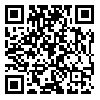BibTeX | RIS | EndNote | Medlars | ProCite | Reference Manager | RefWorks
Send citation to:
URL: http://hayat.tums.ac.ir/article-1-1745-en.html


 , Ali Montazeri2
, Ali Montazeri2 

 , Gholamreza Garmaroudi3
, Gholamreza Garmaroudi3 

 , Saharnaz Nedjat4
, Saharnaz Nedjat4 

 , Roya Sadeghi3
, Roya Sadeghi3 

 , Reza Negarandeh *
, Reza Negarandeh * 

 5
5
2- Professor, Health Metrics Research Center, Institute for Health Sciences Research, ACECR, Tehran, Iran
3- Associate Professor, Dept. of Health Education and Promotion, School of Public Health, Tehran University of Medical Sciences, Tehran, Iran
4- Professor, Dept. of Epidemiology and Biostatistics, School of Public Health, Tehran University of Medical Sciences, Tehran, Iran
5- Professor, Dept. of Community Health Nursing, School of Nursing and Midwifery, Tehran University of Medical Sciences, Tehran, Iran; Nursing and Midwifery Care Research Center, Tehran University of Medical Sciences, Tehran, Iran ,
Background & Aim: Pedestrians are the most vulnerable road users. In many cases, pedestrian-vehicle crashes are often the result of their risky road crossing behaviors. So, this qualitative study aimed to explore the reasons for risky road crossing behaviors among young people.
Methods & Materials: The current study was designed as a qualitative content analysis. Twelve males and females who had a car-accident were purposefully selected with maximum variation sampling. Data were collected and analyzed by semi-structured individual interviews.
Results: Conformity with the masses including “conformity with peers and conformity with the public space of society”, and anomie emerged as the most important social reasons for young pedestrian’s risky road crossing behaviors.
Conclusion: According to the results of this study, young pedestrian’s risky road crossing behaviors are affected by conformity with the masses and peers and as well as anomie so that risky behaviors have been commonplace and inevitable and a part of their lifestyle.
| Rights and permissions | |
 |
This work is licensed under a Creative Commons Attribution-NonCommercial 4.0 International License. |



